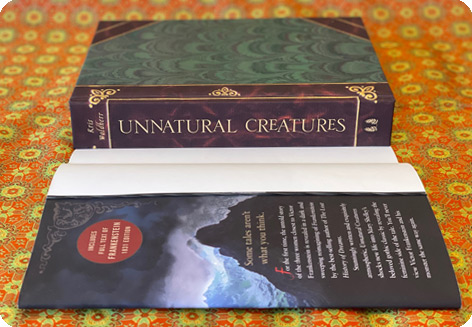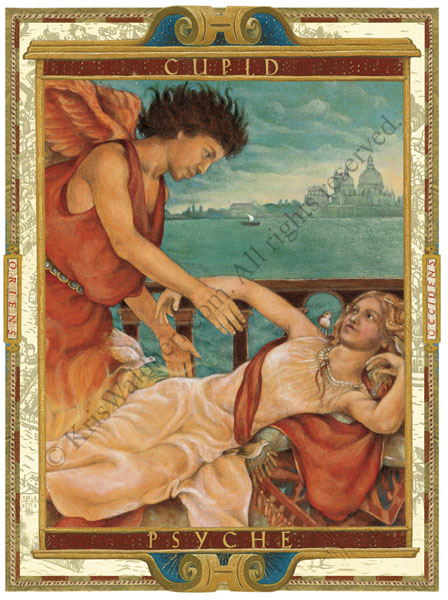
I published Unnatural Creatures in four formats: Kickstarter limited edition, library hardcover, audiobook, and trade paperback.
Updated 9.2024
Ever since Unnatural Creatures: A Novel of the Frankenstein Women came out in October 2022, people have been understandably curious about my self-publishing experiences, especially since my previous books were traditionally published by Big Five and not-so-big publishers. Toward that end, I’ve set up this page to share resources that were helpful to me.
Please bear in mind that this is only one author’s experience. With those caveats, let’s dive in!
First, Some Online Resources
~ New to self-publishing? Here’s a helpful overview from Jane Friedman.
~ IBPA (Independent Book Publishers Association) is a great resource for self-publishing authors. Make sure to check out their informational videos. I joined on the small publisher level to take advantage of their generous member discounts. (I incorporated as a small press to publish Unnatural Creatures.)
~ The Creative Penn podcast by Joanna Penn offers in depth self-publishing information on any subject you can imagine. Highly recommended. Her site has other fantastic resources too.
~ IngramSpark offers print-on-demand (POD) book publishing. Their site has great videos and other resources explaining the self-publishing process. Most self-publishing authors use POD because POD allows books to be printed on an “as needed” basis, instead of a large print run. There’s advantages to both approaches, which I’ll enumerate below.
~ Lulu also offers POD publishing. I use Lulu for my books that are more graphic heavy, especially if there’s full color printing involved. I also like their customer service, which is far more responsive than IngramSpark.They’ll also dropship books internationally for a reasonable rate, if you’re running a crowdfunding campaign or selling direct; that way you don’t have to deal with book fulfillment and shipping. (IngramSpark will also dropship, but it’s a more complicated process. Plus if you want tracked shipping, it costs a lot more.)
 Questions and Answers
Questions and Answers
Q. How do I get my book listed on online retailers?
A. For e-books, you upload your files directly to the online retailer’s site. However, there are a lot of them! The biggest one is Amazon, which you distribute through Kindle Desktop Publishing (KDP). For all other online retailers except for Kobo, I used Draft2Digital, an amalgamator. D2D does take a small cut of the profits, but it’s worth it for the time you’ll save not dealing with numerous e-book platforms. The reason I distributed separately to Kobo is because they distribute to Overdrive for library sales; I felt strongly Unnatural Creatures would be a good fit for libraries.
For print books, as long as you’re in the Ingram catalog, your books are automatically listed on all online and brick-and-mortar retailers including Barnes & Noble. So, if you use IngramSpark for printing your books, you’re good to go! (Yes, Ingram and IngramSpark are basically a monopoly.) However, Amazon also offers POD printing through Kindle Desktop Publishing (KDP) for their site. As for Lulu, though they do offer distribution to Amazon and beyond, I couldn’t get the pricing to work.
What I did: I used both IngramSpark and KDP. However, KDP print books can’t be set up for preorders, which is frustrating. To circumvent this, I had Ingram distribute my softcover books on Amazon for preorders until publication; upon publication, I swapped out to KDP.
Related note: you might be wondering if you can’t do preorders with KDP, why not stay with IngramSpark all the way? Bottom line: you make a far higher royalty rate per book—details on this next.
![]() Q. You mentioned royalties. How do those work?
Q. You mentioned royalties. How do those work?
A. With POD, you’re paid a royalty (ie, percentage) of every book you sell, and you set this percentage. Sounds good, right? However, you need to take into consideration:
- What price the market will bear. Yes, the higher the book price, the more you’ll make. But if you charge too much, people aren’t going to buy. Conversely, if you charge too little, you won’t make a profit. Worse, you could end up owing money.
- Book manufacturing costs. POD costs more per book than offset, full color printing more than black and white and so on.
- Wholesale discounts. To distribute to retailers, you need to set a wholesale discount so they can make a profit. Generally speaking, the standard discount is 55%. To figure out pricing for your book, check out IngramSpark’s pricing calculator, which is fun to play with.
- Book return policies. To distribute wholesale to brick and mortar bookstores, you have to accept returns, ie. books they’re unable to sell. Without a return policy, bookstores won’t stock your book. However, returns means you have to refund what they’ve paid. This can really eat into your profit—to be safe, estimate that as much as 30% of your books will end up as returns.
What I did: as mentioned above, I use IngramSpark for all retailers save Amazon, where I use KDP for paperback. Again, this is because I was able to make a higher profit on KDP. However, I set up the hardcover of Unnatural Creatures on IngramSpark as a hardcover library edition with a no return policy and 40% wholesale discount. Generally speaking, libraries don’t do returns because they’re not a retail middleman selling to a consumer. They’ll also tolerate a lower discount .
![]() Q. What’s the process for print copies?
Q. What’s the process for print copies?
A. Except for KDP, I used IngramSpark and Lulu for everything, including my advance reader copies (ARCs), which I sent out for trade reviews. You’ll need to have your book files designed and ready to print. (More about book design software below.)
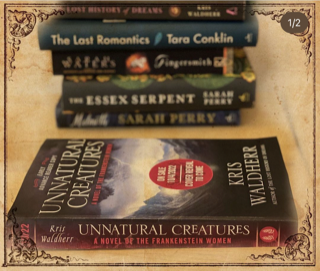
Early ARCs.
I mainly use Lulu for my ARCs because their platform is definitely easier to navigate than IngramSpark. They’re also faster—I’ve experienced slow fulfillment with IngramSpark. You can also print ARCs via KDP, but they’ll arrive with an ugly printed stripe on the cover to prevent reselling unless your book is already released..
Related note: I used POD for Unnatural Creatures, though I did price an offset print run for comparison’s sake. Offset is far cheaper per copy, but you have to pay upfront to print these higher quantities. Distribution is more complicated too—I never got that far into investigating those costs. However, sometimes offset makes sense for self-publishers. One example: a bulk book sale to a price club, such as Costco.
![]() Q. How do you distribute to libraries and bookstores?
Q. How do you distribute to libraries and bookstores?
A. I used Ingram to distribute to bookstores and libraries. This was really straightforward since I printed with IngramSpark, who handled payment, printing, and shipping of my books. Profits from book are deposited directly into my business bank account after Ingram deducts their cut. Also, book profits from all retailers are direct deposit into bank accounts—no checks in the mail to deal with!
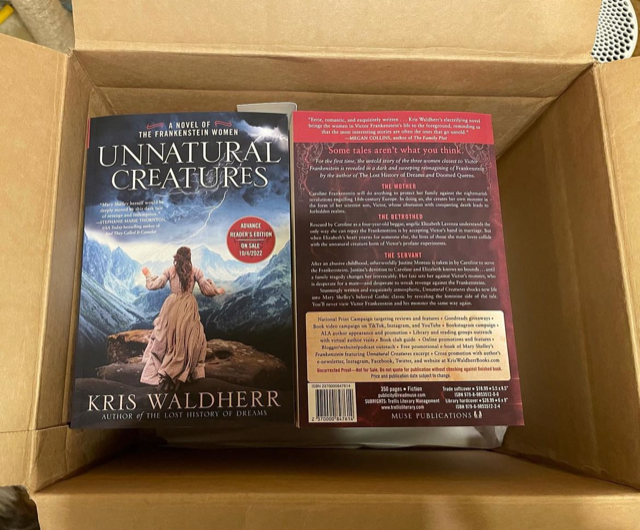
Print arcs I sent to reviewers.
However, marketing books to bookstores and libraries is an entirely different matter. (By marketing, I mean how you persuade bookstores and libraries to stock your book in the first place.) For bookstores, I relied on trade reviews to spread the word—more about trade reviews below. For libraries, I relied on both trade reviews and direct outreach.
What I did: As a traditionally published author, I had a huge advantage with libraries in that I could search WorldCat to see which ones had my books already on their shelves. From there, I sent them mailers about Unnatural Creatures. I also reached out to librarians who’d featured The Lost History of Dreams. Finally, I also for an IBPA promotion at ALA conference. However, I’m uncertain if I’d do this again; I had a hard time quantifying how effective it was.
As for bookstores, I didn’t do outreach beyond trade reviews except for sending an ARC to Barnes & Noble—I only had so many time and resources. In terms of profitability, it made more sense to focus on libraries, where I made nearly three times as much per book sale. I also thought Unnatural Creatures would be a great fit for library reading groups. Plus no returns to worry about!
![]() Q. You got a trade reviews for Unnatural Creatures. I want to know how you managed that.
Q. You got a trade reviews for Unnatural Creatures. I want to know how you managed that.
A. Ah, trade reviews, the bane of authors everywhere! They can really make or break a book. To be honest, I think I had an easier time getting trade reviews because I’m traditionally published. I also understood that Unnatural Creatures was a more literary book—ie, would need strong trade reviews to gain eyeballs and sales.
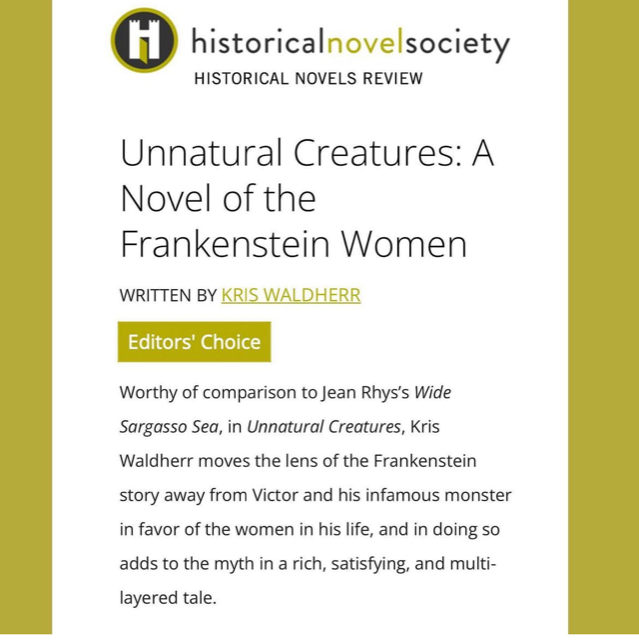 To get trade reviews, I did the following:
To get trade reviews, I did the following:
- I sent out professionally designed ARCs to review outlets about six months prior to publication.
- I set up a NetGalley account to distribute e-ARCs. (I paid for a full account so I could create an open widget for this purpose.)
- These ARCs included endorsements from established authors, whom I reached out to as soon as I knew I was self-publishing Unnatural Creatures. (Again, it helped that I’d been traditionally published and had many wonderful author friends willing to support my book.)
What I did: I pulled together a press list, which included outlets that had reviewed my earlier books. (Poets & Writers has a great book review outlets list.) If I had previous contact with the reviewer, I emailed to ask if they were interested in reading a print or digital ARC. Surprisingly, some reviewers preferred NetGalley e-ARCs over print ARCs, which saved money on my end.
![]() Q. What about paid review services, such as those offered by Midwest Book Review?
Q. What about paid review services, such as those offered by Midwest Book Review?
A. I decided not to pay for reviews. Not only do these reviews add up financially, but booksellers and librarians know they’ve been paid for by the author-publisher; I think this undermines their effectiveness unless you get a starred rave from, say, Kirkus or Publisher’s Weekly. (Yes, Kirkus and PW have pay-to-play reviews.)
![]() Q. How do you best market your books on a budget? Everything costs money: cover designs, author tables at festivals, consignment fees at indie bookstores, entry fees for book awards…
Q. How do you best market your books on a budget? Everything costs money: cover designs, author tables at festivals, consignment fees at indie bookstores, entry fees for book awards…
A. Indeed, everything costs money—it can be really daunting! I think authors need to create a budget and a hierarchy list in regards to potential profitability. For example, if your budget is limited, it makes more sense to spend money on a great book cover design than to buy tons of ads, which won’t be effective if your book cover isn’t professional. (To my mind, the book cover is the single most important factor influencing sales outside book content itself.) However, much of my marketing help was free. For example, a close friend volunteered to send out marketing and publicity emails, which helped obtain press notice; another friend offered business advice on best practices.
In terms of the profitability hierarchy, I haven’t come across consignment fees for stocking books in indie bookstores, though I’m sure they exist. On my end, I decided not to focus directly on getting my books into indie bookstores since the potential for profit wasn’t high enough to warrant my limited resources, though of course I hoped Unnatural Creatures might appear on their shelves after a bookseller came across it in a trade review.
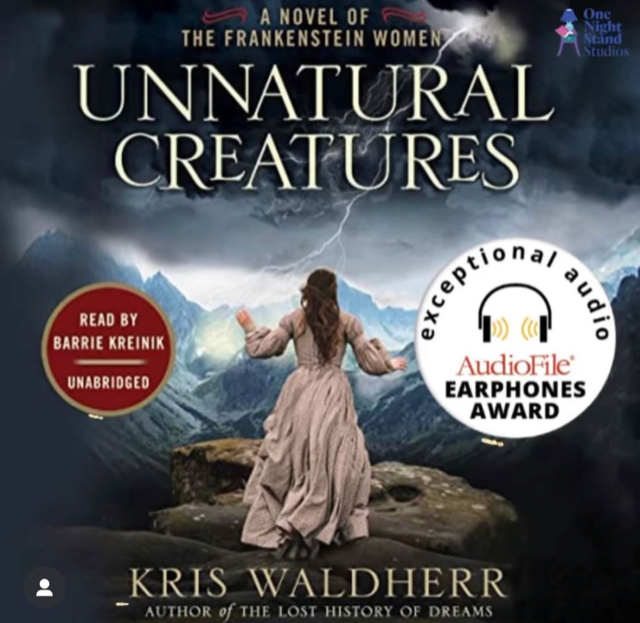 I also didn’t pay to enter contests or apply for awards since I’m uncertain how helpful they are for book sales, though it’s certainly affirming to win awards! (FYI: the audiobook of Unnatural Creatures won an AudioFile Earphones Award, which didn’t cost me a cent.) My bottom line: would a Big Five enter a book into this contest? If the answer was “nope”, I skipped it. I also looked at their previous years’ winners to see what the books looked like and whether their sales and reviews got a bump. Again, profitability hierarchy.
I also didn’t pay to enter contests or apply for awards since I’m uncertain how helpful they are for book sales, though it’s certainly affirming to win awards! (FYI: the audiobook of Unnatural Creatures won an AudioFile Earphones Award, which didn’t cost me a cent.) My bottom line: would a Big Five enter a book into this contest? If the answer was “nope”, I skipped it. I also looked at their previous years’ winners to see what the books looked like and whether their sales and reviews got a bump. Again, profitability hierarchy.
I haven’t paid for author tables at festivals since they’re a lot of work and time. That said, some authors do great hand-selling their books and love meeting potential readers—I think you need to decide where it falls on your personal profitability hierarchy.
What I did: I pushed for pre-publication consumer reviews via NetGalley, which was really helpful in getting word out. I ran a Goodreads giveaway; while it plumped up my “To Read” numbers, I’m uncertain whether it directly influenced sales. Post publication, I ran Facebook ads, which did seem to help boost sales. That said, Facebook ads require research and patience: you have to test various ads and gradually scale up, checking for profitability as you go. I also paid for a Bookstagram tour, which was really great in getting the word out!
![]() Q. What software did you use to design your books?
Q. What software did you use to design your books?
A. I used Vellum for print and ebook. If you’re on a Mac, I highly recommend it! The covers were designed in Photoshop. However, I used Adobe InDesign for The Goddess Tarot 25th Anniversary Edition and Tarot for Storytellers. Both books had so many graphics that a more powerful design program was required, especially since the Goddess Tarot Anniversary book was in full color.
![]() Q. I’m curious whether you hired an editor.
Q. I’m curious whether you hired an editor.
A. I didn’t. By the time I decided to self-publish Unnatural Creatures, it had been through numerous rounds of developmental and copyediting between my agent, her assistant, and beta readers, including one who’s a professional editor. However, in retrospect, I should have paid for a proofreader on the last round of edits. No matter how hard we tried, small typos slipped through, such as inverted quotation marks—it was frankly crazy-making.
![]() Q. Did you do your promotional campaign yourself, as far as designing the materials and promo items, or did you have outside help?
Q. Did you do your promotional campaign yourself, as far as designing the materials and promo items, or did you have outside help?
A. All design was by me, but bear in mind I have decades of professional experience as a book designer. I even worked at a Big Five imprint for seven years. Though Photoshop is my “go to” program, I also used Canva to design promotional videos and many of the graphics. I recommend the paid version because it offers such a wealth of resources: photographs, videos, premium typefaces. It works out far cheaper than licensing individual photos and such.
As far as the promotion campaign itself, I set up a task schedule. I also had outside feedback in figuring out What To Do. For the most part, I hewed close to schedule.
![]() Q. I would love to find out how traditional publishing has been different than indie for you, and in hindsight any lessons you’ve learned from your diverse breadth of publishing experience.
Q. I would love to find out how traditional publishing has been different than indie for you, and in hindsight any lessons you’ve learned from your diverse breadth of publishing experience.
A. The main difference is that I have all the control as an indie publisher, which I like very much. I’ve always wanted to have a small press of my own just as William Morris did. However, this also means I end up with all the responsibility, though I’ve lots of support and help. (I’m so grateful to everyone who’s helped me!) I always say that this isn’t self-publishing as much as it’s self-directed publishing: you’re the one making decisions and telling people what to do. The financial chain is also different. With a traditionally published book, I’d get paid an advance in three to four parts leading up to publication. With an indie-published book, the money comes monthly after it’s published. It’s a marathon as opposed to a sprint.
Another surprise: in many ways I’m working as many hours on book promotion as I did when I was traditionally published. These days, unless you’re very, very lucky to have won a “golden ticket” as an author, I’ve found most publishers expect us to take on the lion’s share of promotion anyway. Also, readers truly don’t care who publishes a book as long as it’s a compelling read and professionally produced.
![]() Q. Self-publishing seems to work very well for romance authors, but what about historical fiction? Are there certain time periods/events that authors should focus on to attract readers?
Q. Self-publishing seems to work very well for romance authors, but what about historical fiction? Are there certain time periods/events that authors should focus on to attract readers?
A. That’s hard to say, though it does seem as though WWII books are as popular as ever. No one ever knows what the Next Big Thing is until it happens, alas. FWIW I’ve been told that people who read historical fiction prefer print, but romance readers prefer ebooks. If it’s a help, Unnatural Creatures’ print sales are nearly the same as ebook sales at this early stage of post-publication, and the hardcover has proved more popular than I expected.
![]() Q. What non-writing skills are most important (ie, Photoshop, video editing for book trailers, etc.)?
Q. What non-writing skills are most important (ie, Photoshop, video editing for book trailers, etc.)?
A. The ability to multitask yet stay on task—I’ve never worked so hard on a book! But then again, Unnatural Creatures is the first book I’ve published from my little imprint that could. For my other books, things varied.
In terms of creating promotional graphics, Canva is an amazing tool for non-designers and is far more reasonably priced than Photoshop, which has quite the learning curve. It’s also really easy to create book videos and social media reels on Canva.
![]() That’s everything for now—I hope you found this page helpful! Finally, want to pick my brain about your specific publishing situation? I offer one-on-one consulations via Zoom. You can also learn more about Unnatural Creatures here.
That’s everything for now—I hope you found this page helpful! Finally, want to pick my brain about your specific publishing situation? I offer one-on-one consulations via Zoom. You can also learn more about Unnatural Creatures here.
